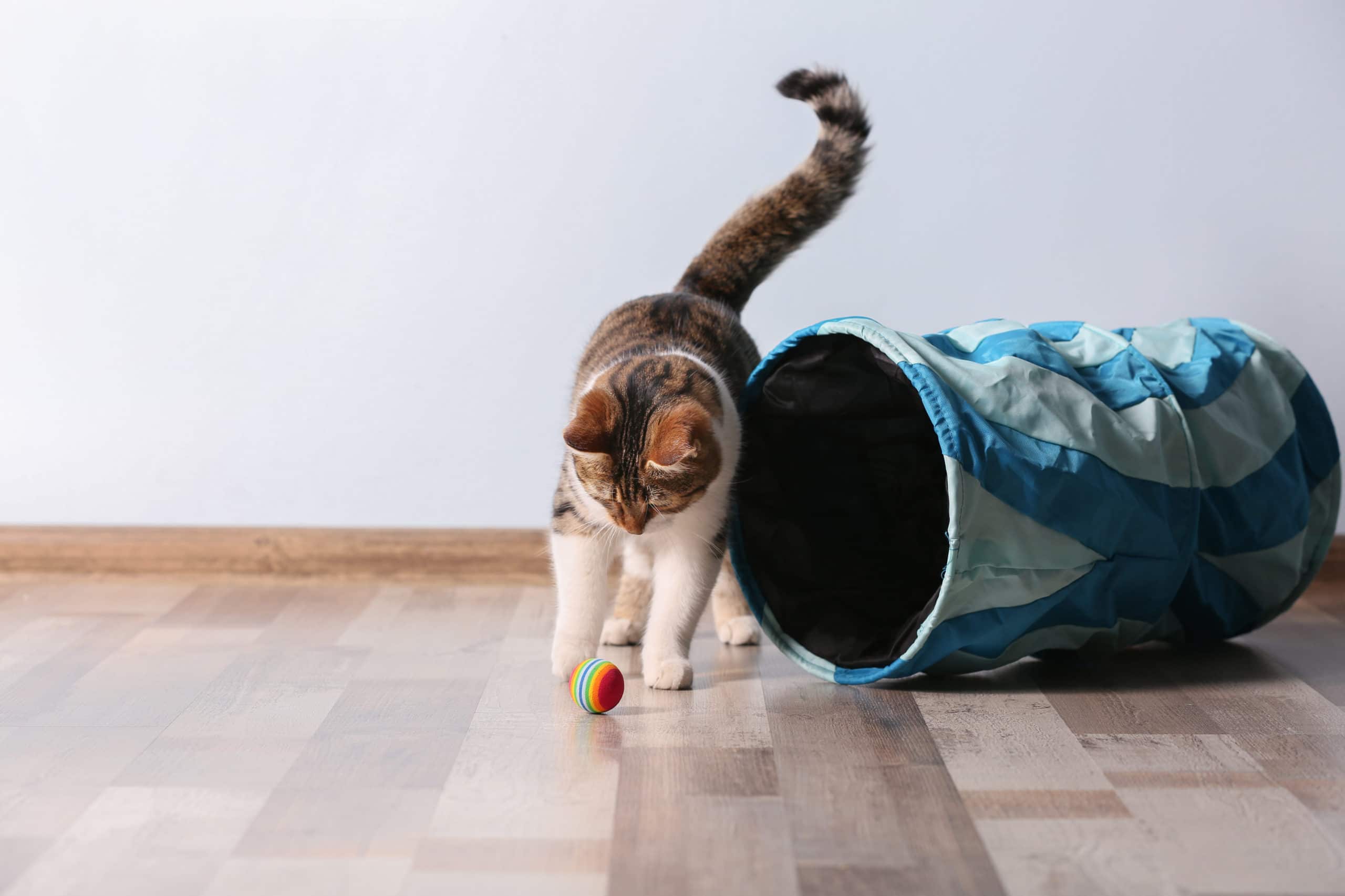Whether your cat is slightly lazy or full of energy, plenty of exercise is not only good for their physical health but also helps keep them mentally stimulated. Bored cats are more prone to health and behavioural issues, so do them a favour and keep them active!
Keeping your cat active doesn’t have to be a chore. They are naturally curious creatures and with the right encouragement you’ll be left in awe of your feline friend’s natural athleticism. We’ve collected several of the best ways to keep your cat active, but remember that each cat is different and the best exercise is the one they enjoy. Try experimenting with different things until you find something your cat loves!
Why is it important for your cat to exercise?
Considering that over 32% of all cats in Australia are estimated to be overweight or obese it should be readily apparent that cat owners should be encouraging them to stay active.
Activity and exercise can help your cat in multiple ways including:
- Stress relief – Stress and anxiety are as harmful to our feline friends as they are to us. Stressed cats are more likely to develop behavioral problems, such as aggression, urine spraying or obsessive-compulsive disorders. One of the best ways to counteract stress? Regular playtime with you (and it just may lower your stress level, too).
- Break from boredom — Cats are naturally curious and need to be entertained or challenged every day. Otherwise they can become bored, lethargic and depressed. Interactive playtime, along with other toys or entertainment while you’re away from home, can help avoid boredom and mischief.
- Enhance bonding — Playing with your cat is an excellent way to increase the bond that you share.
What options do you have to exercise your cat?
There are many great options you can try to get your cat off that comfy pillow and up and about! We’ve collected some of the best ideas here:
- Pair up exercise partners – Since a cat won’t respond to your requests to play as easily as a dog might, a simple solution is to pair up your cats or a friend’s cats and let them play together. Two cats who get along well will get plenty of exercise through their own wrestling and chasing games. And the best part? It requires very little effort from you!
- Have fun with lasers – Few things will entertain you more — or have your cat moving faster — than a laser pointer. Laser toys are often good entertainment, but follow it up with a real toy the cat can catch to avoid fixation and frustration over never being able to catch the light beam. Just be sure to never shine the beam directly into the cat’s eyes.
- Get your cat on a treadmill or wheel, with supervision – Believe it or not, you can actually teach your cat to run on a treadmill for exercise! It’s best to start when they are young, have lots of energy to burn, and are easy to entice with a toy. You should make sure to always supervise your cat while it’s on the treadmill.
- Try catnip for encouragement – Catnip is a useful tool to get your cat to exercise, but it’s best to use it sparingly lest you become reliant on it. Remember that not all cats respond to catnip, and of those that do, their reactions may differ. You can learn more about catnip with our guide here.
- Go outside – With proper training and the right equipment, you can entice your cat to walk with a leash and a harness outside, just like dogs do. Leash-walking is great if you can get your cat to tolerate the harness and lead. Make sure the harness fits properly and can’t be wriggled out of. Young cats are easier to train, but in all cases it takes patience and perseverance.
How do I get my cat used to being on a leash?
It’s very important to get your cat comfortable with being on a leash before you attempt to take them for a walk. Take your cat to a room where there are no distractions and where they won’t be able to get away from you such as a bathroom. Attach the leash to their collar and then just let them walk around in the room while you hold onto the leash loosely. Try this several times over a few days until your cat gets used to walking while being tethered to you. Then just take him for walks around the house until he is used to walking with you for extended distances.
Once your cat is comfortable walking for long distances around your house, you can try taking him outside, but make sure to use a very short lead at first. Be sure that you don’t let them get too far away from you and that they don’t become frightened of walking in the new environment.
How do you know when they’ve exercised enough?
No matter what activities you decide to introduce into your cat’s playtime it’s crucial that you build up their physical activity gradually so as not to increase the risk of injury. This is especially true for overweight cats who are more prone to injuring their joints in the excitement of playtime. Make sure to keep an eye out for signs of exertion while playing, such as panting and shallow breathing, and take a break if you feel like they are struggling. Remember the key is to build up their overall health with exercise and if your cat is more of a Garfield type this may take time. Always consult your vet before starting on any cat exercise regimes, especially if they have any underlying health concerns.

